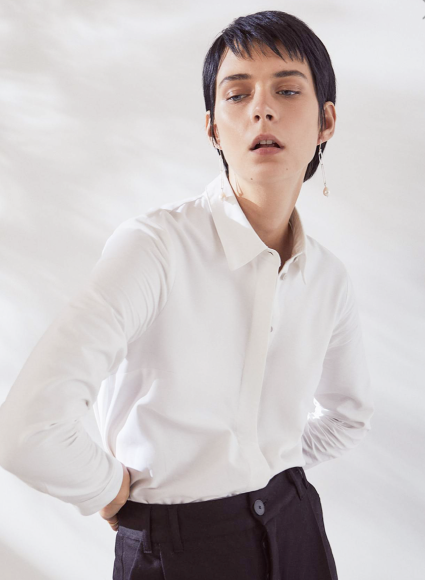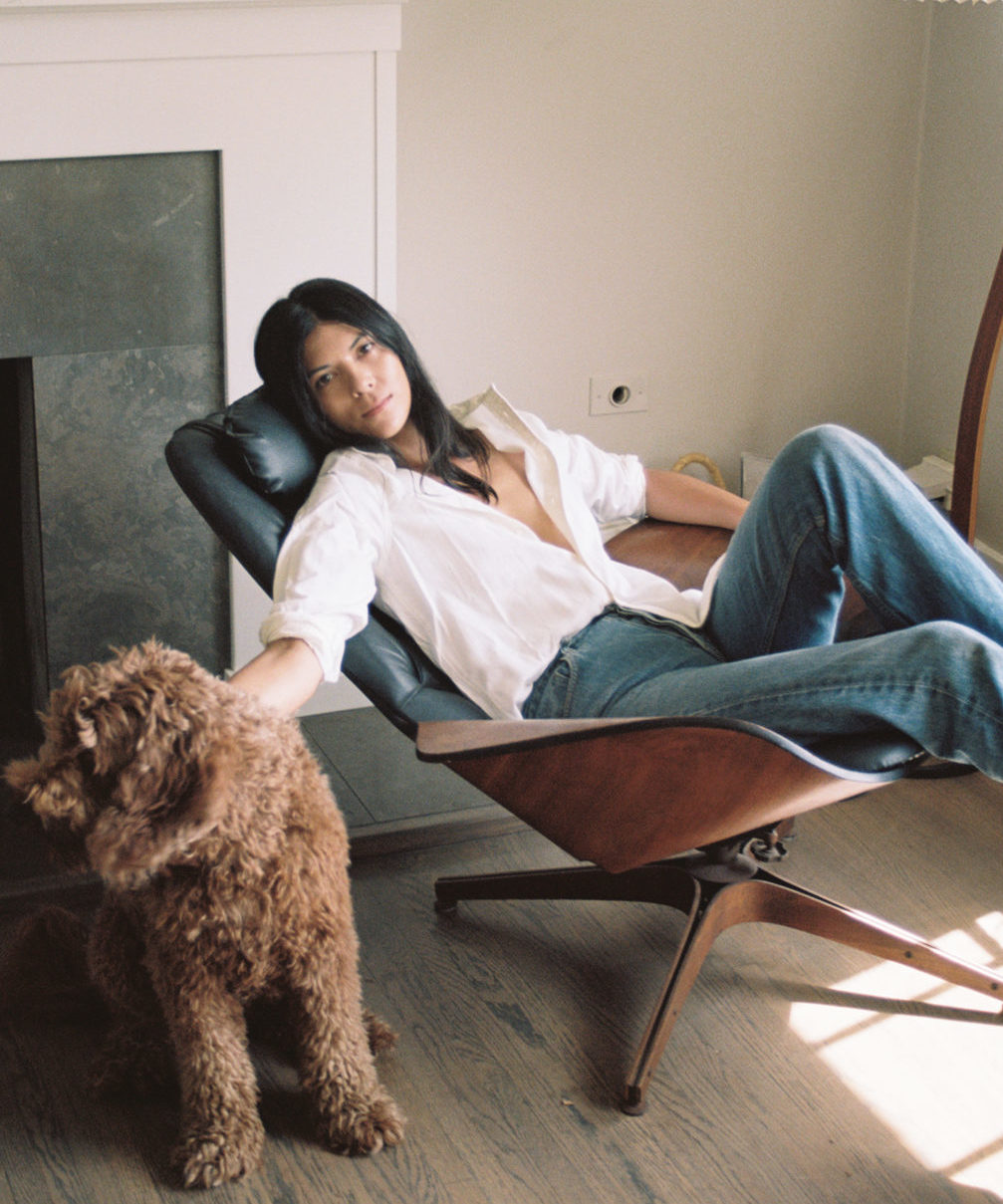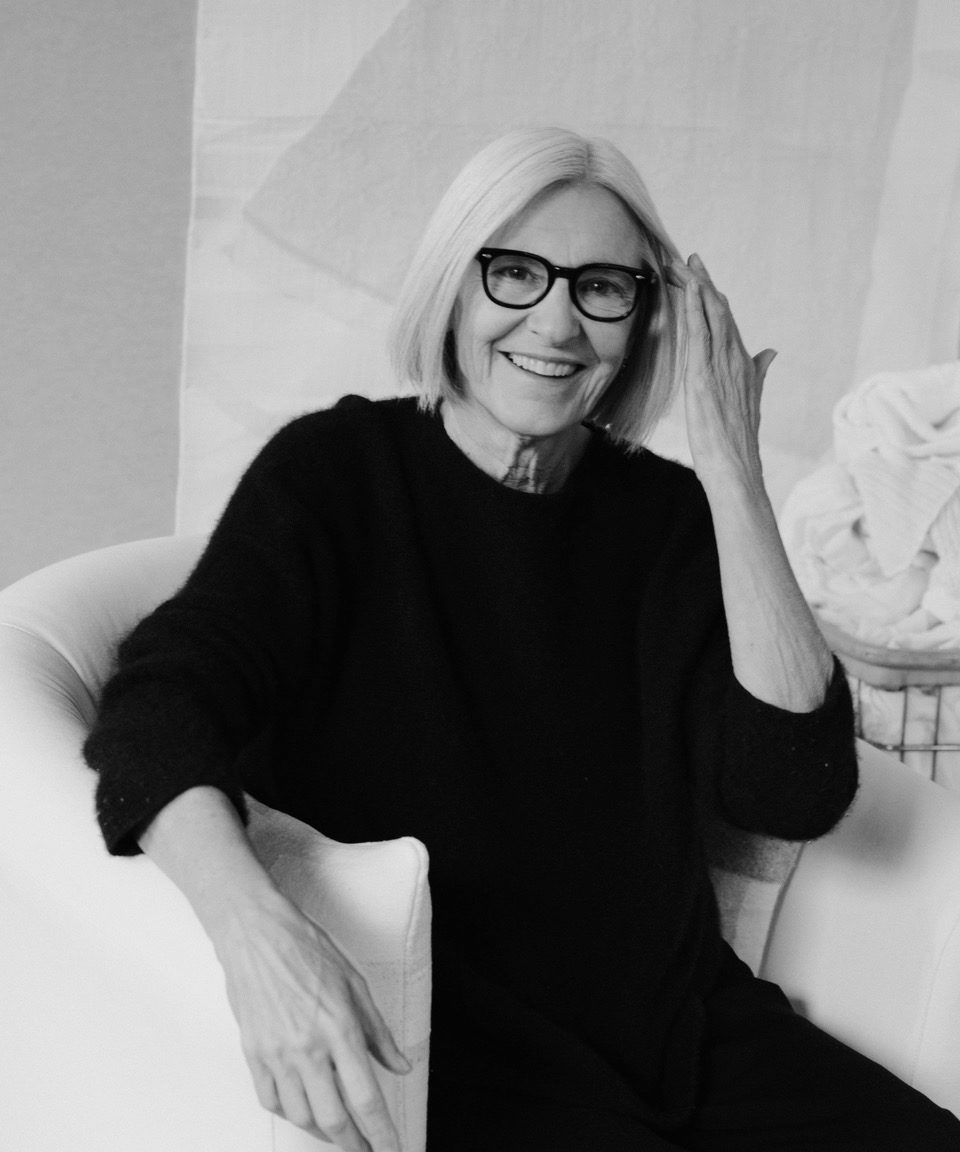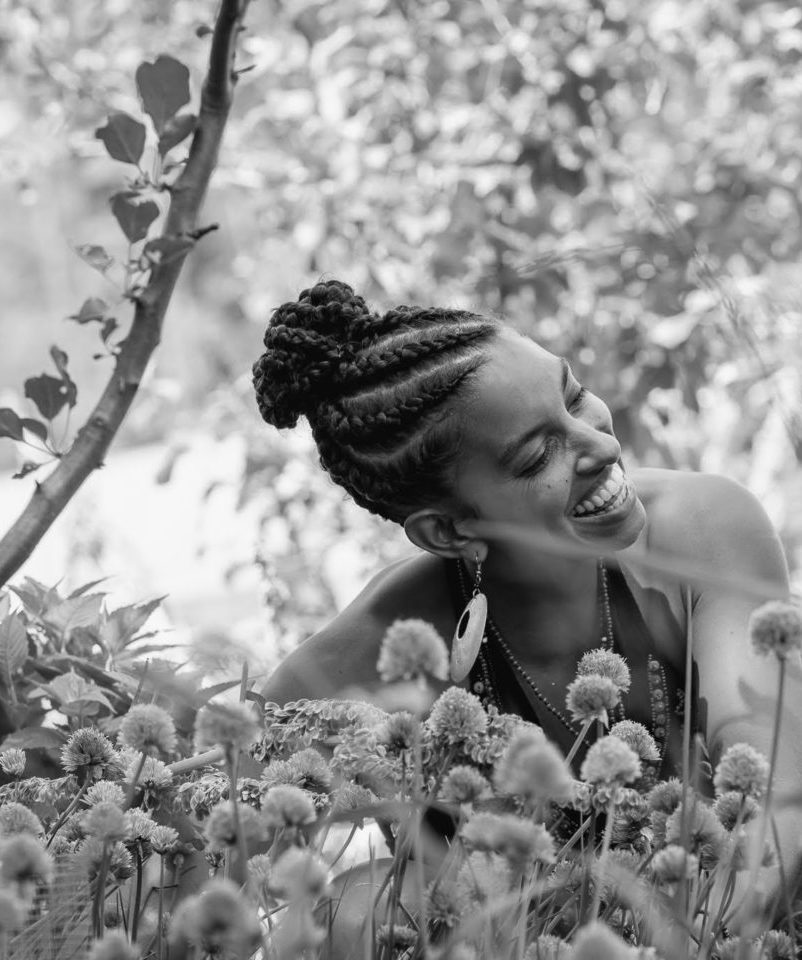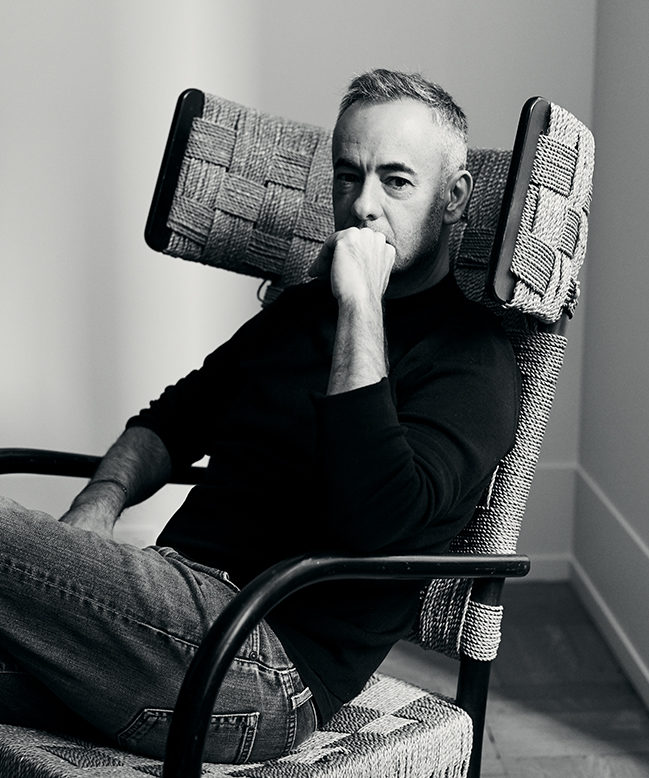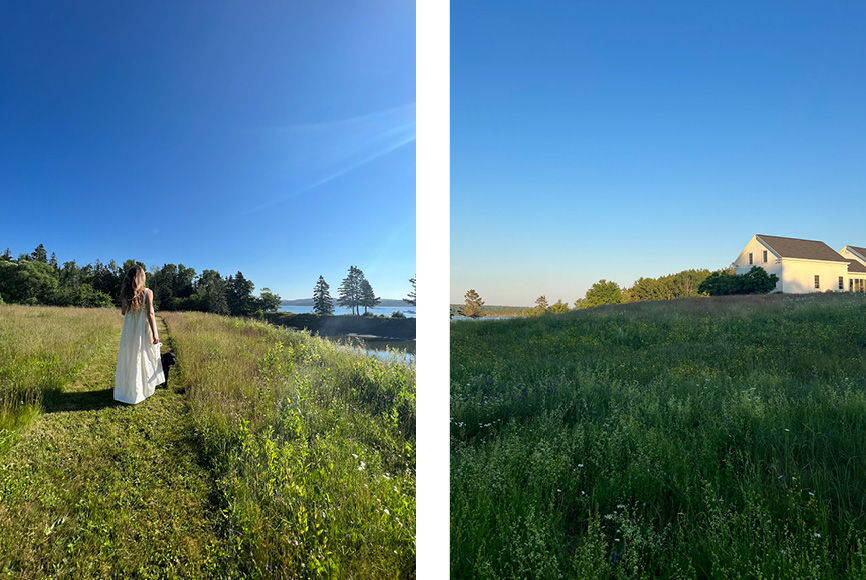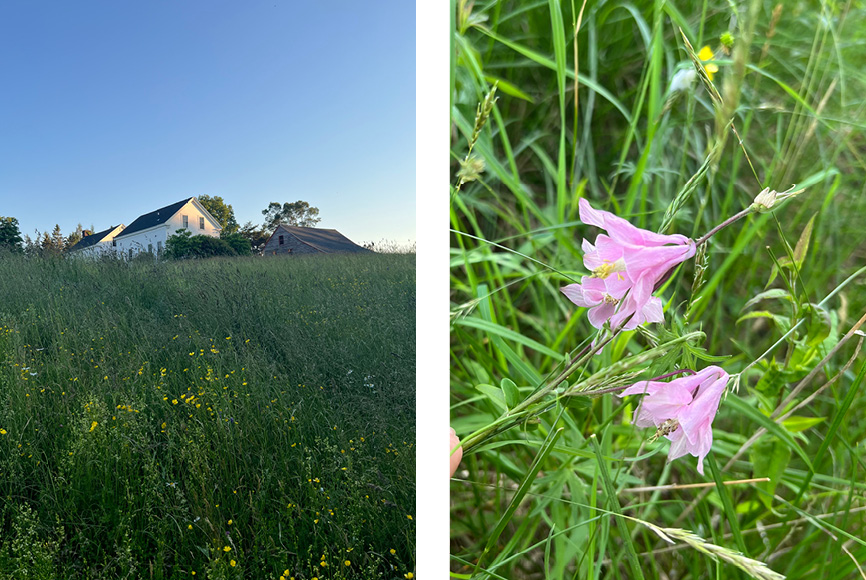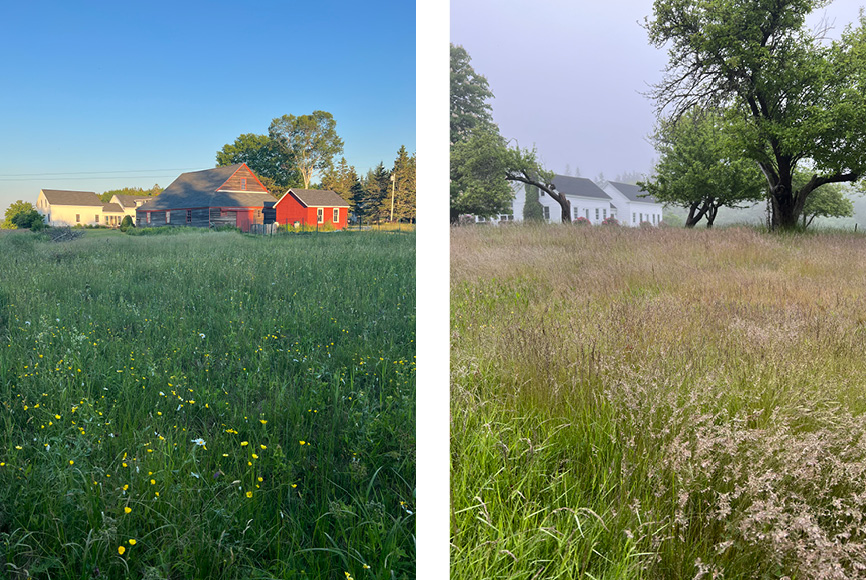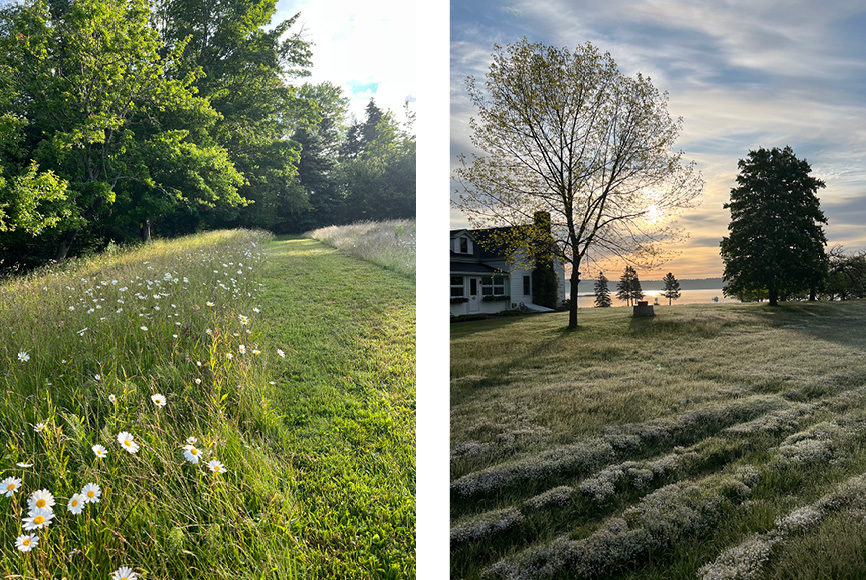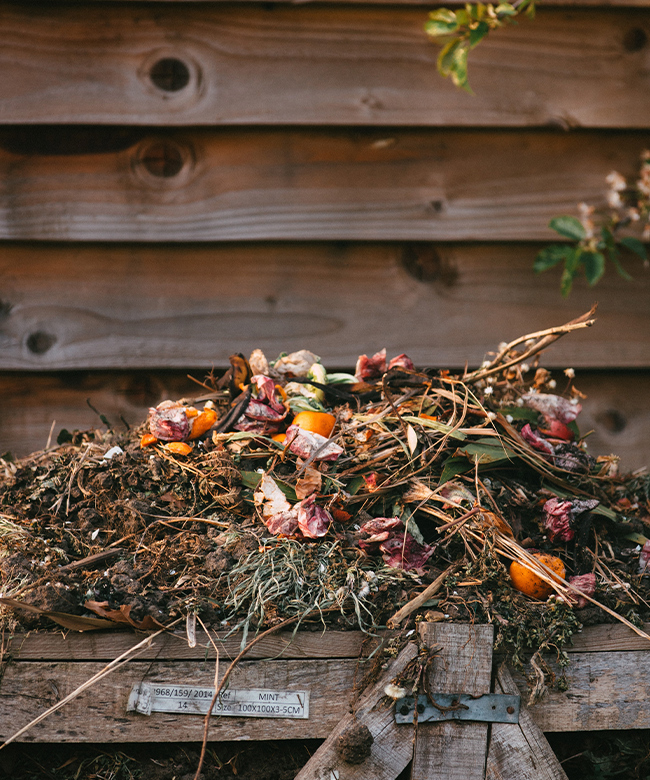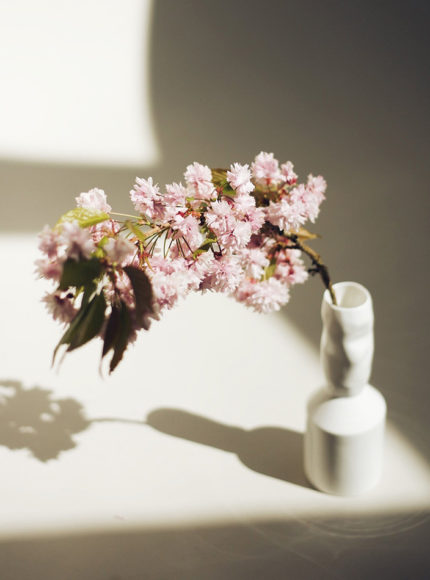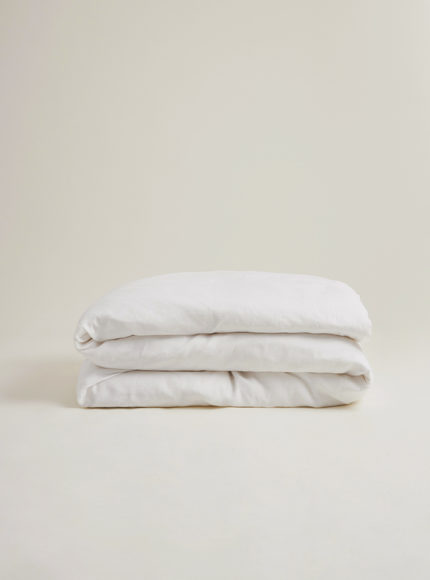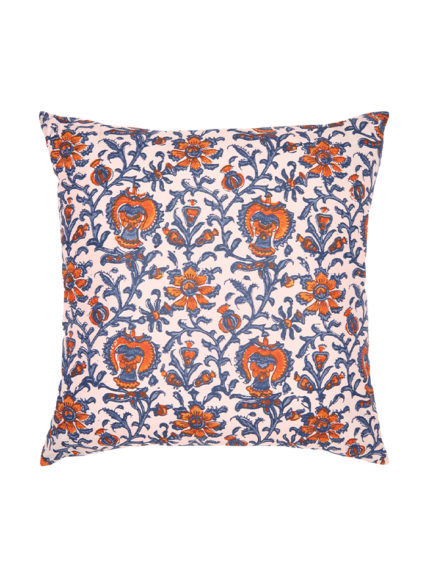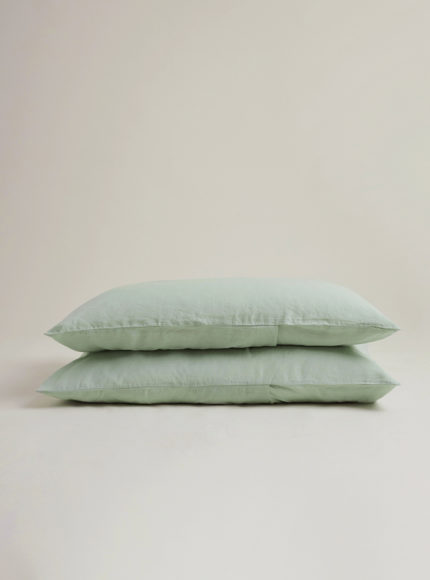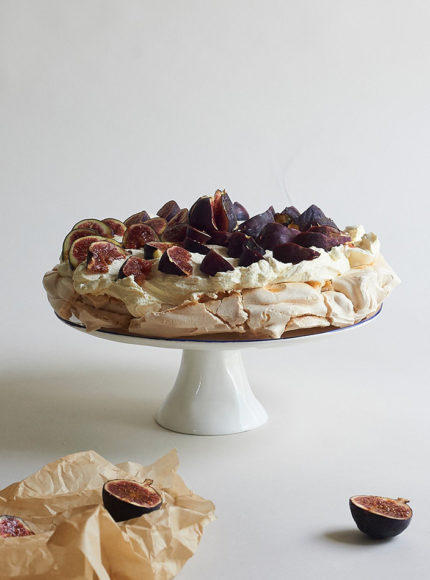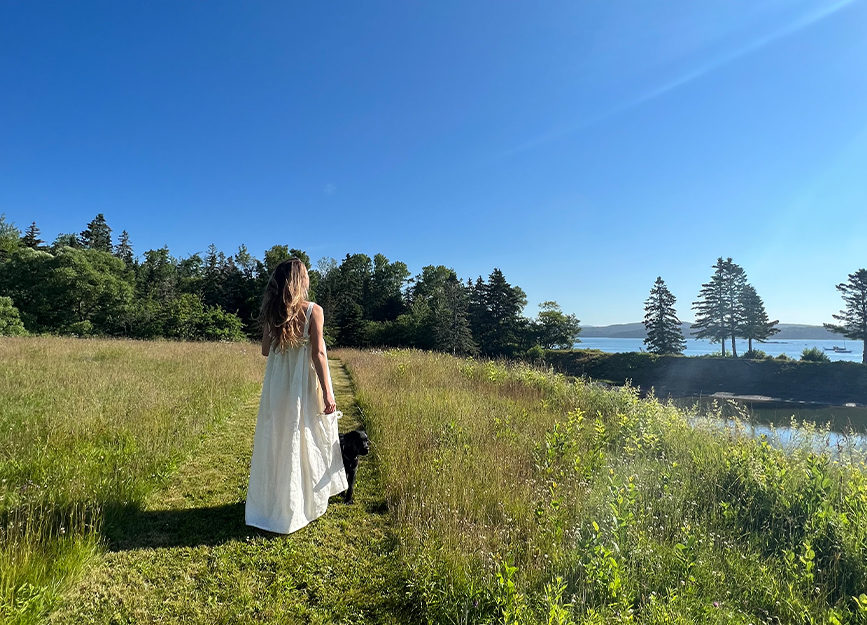
@corahilts wearing @ozma_of_california
@corahilts
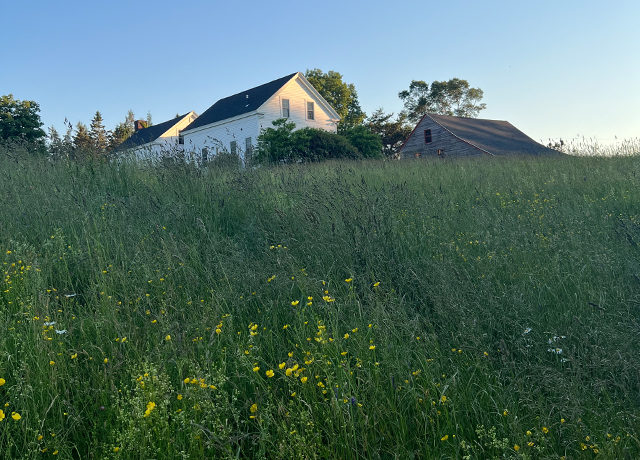
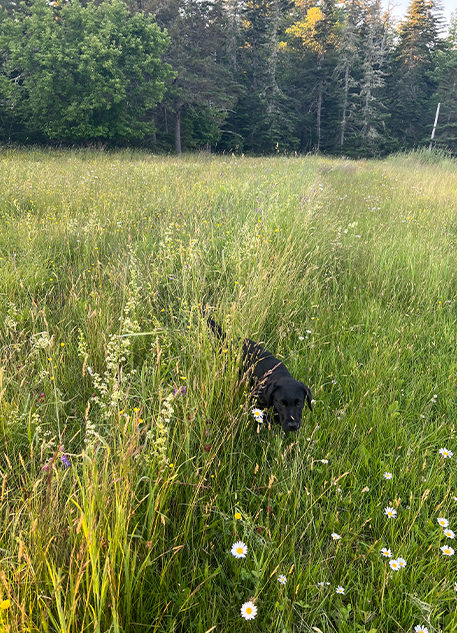
@corahilts
Why and How To Plant a Wildflower Meadow
When we bought our farmhouse one of the biggest selling points to us was the land – nearly six acres of soil and gardens that we had to experiment with our biggest desire which was to regenerate the grounds into a place for biodiversity and a thriving ecosystem. We had inherited a very mowed space – the previous owners used to mow the lawn almost every day. We began looking at old photos of the space farm and realized how much meadow there used to be and the wheels started turning – could simply letting the lawn grow back into meadow be a simple, beautiful and best of all, sustainable, solution?
We started this Spring to sit back and watch the results of allowing nature to do it’s thing, and the results have been more amazing than we could have imagined.
So why is this a good idea in terms of sustainability?
1.Food for Bees.
Well first of all let’s start with our pollinators – bees are intrinsic to food production and life as we know it. However, bees are now facing catastrophic declines. In North America, nearly one in four native bee species is imperiled, according to the Center for Biological Diversity, partly because of habitat loss, pesticide use, climate change and urbanization. Lawns typically provide poor habitat for bees. But if allowed to flower, lawn weeds — perhaps better characterized as plants other than grass — can provide rare spring food for bees emerging from hibernation. (NY Times).
Also, if you want to focus solely on how to create a bee friendly garden, we have a guide for that HERE!
2. Supports biodiversity
We are losing biodiversity and species at an amazing rate, and whilst we often look towards more mainstream and large animals, we also need to look at smaller species and organisms as all being intrinsic to the working of nature and planetary health. “Many different groups are important for providing essential ecosystem services. In order for nature to continue ‘working’ reliably for us, we therefore need to protect biodiversity at all levels in the food chain, including in often overlooked groups such as microbes or insects,” says co-author Eric Allan, an ecologist at Germany’s University of Bern. The wonderful thing about our meadow has been seeing the amazing amount of insects, birds, butterflies, etc. come back to it. Even foxes and eagles now come to the wildflower meadow to feed. Just our small plot has become a haven for biodiversity and shown us just how powerful a difference we can make just as one couple with one home.
3. Avoids fuel for mowers and water during droughts.
As MNN’s Starre Vartan wrote last year, about 40.5 million acres of lawns exist in the U.S. alone, which is more than double the size of the country’s largest national forest. Mowing a lawn takes time and money, both for buying a mower and then keeping it fueled. Many lawns also need to be irrigated, which can tax water supplies during droughts. Synthetic fertilizers and herbicides wash into local watersheds, potentially causing even bigger problems downstream. And on top of all that, a patch of clipped, homogenous grass does not support very much biodiversity. Leaving even a half or a quarter of your lawn to flower could make a huge dent on your environmental impact as a homeowner.
There are so many other reasons we have loved creating a wildflower meadow – it looks beautiful, it looks natural, and every day we seem to discover some new native flower popping up that delights us. But if you are feeling hesitant still, this is one of my favorite quotes from organic gardener Alys Fowler on how wonderful it could be: “Your lawn is already a wildflower meadow – every inch of soil is waiting for its moment to burst forth. Those weeds are some of the best insect food, growing despite the weather, endlessly repeat blooming, rich in nectar and pollen. A seed bank is already there – it might even contain orchids. Oh, and perhaps plenty of moss, essential stuff for nests and nature of all sorts.”
Also, please remember that you do not need acres and acres of countryside to rewild or plant a bit of meadow! When we lived in London we had a tiny patch of outdoor space and I planted native flowers in planters, and did a seed bomb day around Hackney (see Lily Kwong’s Freedom Gardens account for inspiration here – https://www.instagram.com/freedom_gardens/ ).
Everyone can make a difference with just a few seeds so please remember that!
How to start a wildflower meadow
My favorite way to do this is using American Meadows seeds, which has a great selection of native seeds that you can choose according to where you live.
Step one – simply clear a patch of lawn or grass that you would like to convert to meadow. I love to do this by laying down cardboard for a couple of weeks to kill off the grass underneath, and then spreading a nice layer of compost on top. You can learn more about how to create a no till garden here!
Step two – sprinkle your seeds on top of the compost and then water in.
Step three – make sure the seeds remain watered until they begin to sprout.
Step four – keep adding to your wildflower meadow area until you are happy with the results!
If you want more inspiration on doing some nature based gardening, my podcast conversation with Molly of ORCA Living is a great listen!












